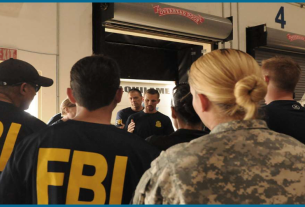For someone in the peak of health, Martin Jenkins participates in an astonishing number of medical tests. In November 2024 alone, he underwent MRI scans of his brain and torso, an ultrasound scan of his neck, a bone density scan, an ECG of his heart and a series of computer-based tests to assess his memory and cognitive abilities.
“I don’t do this for personal health gain, but for the benefit of humanity,” said Jenkins, 56, who lives in Somerset, UK. He is a participant in a national biobank programme – a large-scale initiative where biological samples, along with genetic, lifestyle and health information, are collected from volunteers and stored in a massive database.
A biobank donor for the past 17 years, Jenkins is one of 500 000 such volunteers in the UK and among millions more in the EU and around the world. Biobanking, which started as far back as the 19th century, can speed up medical research by providing researchers with a vast amount of healthcare data and samples whenever they need them.
“What’s underestimated is that all medications and all treatment guidelines used today are based on samples and data coming from patients,” said Jens Habermann, a professor of translational surgical oncology and biobanking at the University of Lübeck, Germany.
“We may not have used the term biobanking 20 to 40 years ago, but the concept was the same – patients then, as now, were supporting future clinical treatments, diagnostics and health screening.”
Europe’s biggest and best health resource
In Europe, national biobanks started in the late 1990s and early 2000s. However, they did not come together in a pan-European initiative until a broad consortium named BioMolecular Resources Research Infrastructure – European Research Infrastructure Consortium (BBMRI-ERIC) was formed in 2013, with EU guidance and funding.
Today, BBMRI-ERIC is Europe’s main biobanking body. It brings together researchers, biobankers, industry and patients in a collaborative network that benefits medicine and patients. Habermann is the consortium’s director-general.
“
When it comes to data and sample collection, we need to keep thinking bigger and better.
“BBMRI-ERIC is probably the most significant resource we have in Europe for coordinating research that aims to prevent, diagnose and treat a wide range of serious and life-threatening illnesses,” said Habermann. Those illnesses include cancer, as well as serious infectious and neurological diseases.
Before the consortium was formed, national biobanks across Europe mostly functioned as isolated entities. Thanks to BBMRI, these individual research tools became a collaborative international network allowing more comprehensive biomedical studies.
Headquartered in Graz, Austria, the consortium is one of the global standard-bearers of the new approach to biobanking.
An important aspect of biobanking will be sustainable and environmentally friendly operations, with the introduction of solutions that cut energy consumption for computing operations and the storing of samples, which are currently kept in freezers at ultra-low temperatures.
One of the ideas is to use liquid nitrogen containers, which halt biological processes, instead of energy-guzzling refrigerators.
Thinking beyond national biobanks
The BBMRI-ERIC community comprises 24 national networks of biobanks from across Europe, plus the International Agency for Research on Cancer, part of the World Health Organization. All of them pay annual membership fees, with more funding coming from the EU.
It collaborates with around 570 biobanks to collect and store samples and health data. These then become visible through an online access system. The network then connects researchers with the stored materials and data they need for health-related research in the public interest.
Its researchers today provide guidance for individual biobanks so that the samples and data they collect are of consistently high quality and comparable across the network. Experts also advise biobankers and researchers on ethical and legal issues, such as patient consent and the safe storage of their data.
Some volunteers make one-off donations of samples during hospital treatments while others, like Jenkins, participate on an ongoing basis, creating a vast resource for scientists.
Researchers from national biobanks can showcase their samples and data for the benefit of other researchers based anywhere in the world through BBMRI’s online access system.
The ultimate goal is for researchers to use this resource to better understand the human body and improve public health.
Making biobanking safer, better
In 2024, the researchers at the biobanking network launched a new EU-funded project named EvolveBBMRI to develop a 10-year strategy for the network.
A project of co-creation, the strategy was shaped by the entire biobanking community, including patient organisations. The overarching aim is to speed up data collection and storage and deepen collaboration with industry.
“
Promoting a better understanding of the interconnectedness of human, animal and environmental health is key to preventing future pandemics.
This initiative also seeks to further streamline and enhance the safety of data collection, storage and sharing across Europe, with a focus on sustainability and greener biobanking.
“When it comes to data and sample collection, we need to keep thinking bigger and better,” said Habermann.
“The climate crisis, air pollution, water pollution, food quality – these things are all interconnected and all impact human health. For the sake of human health, we need to expand the work of national biobanks and improve the way they share information with one another and with industry partners.”
Pandemic proofing
One of the network’s key objectives is to increase global resilience in the event of future pandemics. This involves researchers sharing and studying biobank material to improve their knowledge of how diseases can spread between animals and humans.
Many infectious diseases originate in animals and can be transmitted to humans, a process known as zoonosis. By monitoring and maintaining animal health, scientists can identify and control potential sources of zoonotic diseases before they spread to humans.
Environmental health is another consideration. Changes in the environment, such as deforestation or climate change, can destroy animal habitats and make it easier for humans to come into contact with disease-carrying animals. Pollution and poor waste management can also create breeding grounds for disease-spreading insects such as mosquitoes.
This holistic approach, known as One Health, is promoted by the EU. It emphasises the importance of collaboration between human, animal and environmental health sectors to protect human health.
“Promoting a better understanding of the interconnectedness of human, animal and environmental health is key to preventing future pandemics, and this is a core focus for BBMRI in the next decade,” said Habermann.
Research in this article was funded by the EU’s Framework and Horizon Programmes. The views of the interviewees don’t necessarily reflect those of the European Commission. If you liked this article, please consider sharing it on social media.



